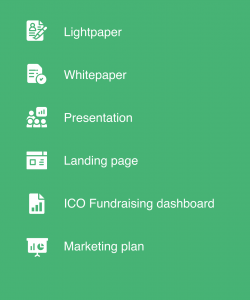Содержание
Blog Actionable articles to help managers improve in their role. About us Officevibe helps your teammates be exactly who they are – because 4 phases of team development that’s them at their best. Engagement Get to know your people with Pulse Surveys, eNPS scoring, anonymous feedback and messaging.

Although forming, storming, norming, and performing takes teams on the journey to high performance, team development is not a linear process. As new elements are added or subtracted, the dynamic is altered. As issues are addressed and resolved, the team’s morale begins to increase. Trust builds, productivity rises and the team begins working together toward the common goal. At this point, the leader should draw out the opinions of all members and leverage the diversity of the team.
Successfully moving through the storming stage means that a team has clarified its purpose and strategy for achieving its goals. It now transitions to a period focused on developing shared values about how team members will work together. Norms become a way of simplifying choices and facilitating collaboration, since members have shared expectations about how work will get done. When you can identify which development phase your teams are in, it’s much easier to provide exactly the direction they need so they feel more focused and connected.
Scenario: Youre Leading Your Team Through The Performing Stage
If your team is spread out, you can still have a very successful kick off meeting with video conferencing. The next time you’re doubting the trust between you and a co-worker, remember that it’s natural. All teams go through it, and it’s worth the investment to strengthen trusted relationships. Learn about their communication style, how they like to give and receive feedback, how they like to work within a team. Even though there were 50 of us, crammed into a single classroom for 10 hours per day, six weeks straight, we really felt like a team. Team members in the forming phase often believe they trust their co-workers, and believe their co-workers trust them.
Chief Learning Officer is a multimedia publication focused on the importance, benefits and advancements of a properly trained workforce. Tell teams what they are doing right as well as what they need to improve. When you lead a group, part of your responsibility is to observe. Each person in your group holds some value, otherwise they wouldn’t be there, right? People get so lost in a specific task that they forget why they are doing it in the first place. Teams need a clear purpose and mission and should be reminded of them often.

The team may disagree on how to complete a particular task or voice any concerns. The storming stage is when the initial excitement and good grace has run out. The reality and the weight of completing the project has now most likely settled in. The team has just been introduced to each other and the task has been allocated.
Track Team Time With Toggl Track
There are other advantages to tracking your time with an app though. When you know how long a process takes, you can identify areas that could be made more efficient. It can also help you predict how much additional time your group might need to complete the current project. Even if your group has two or three leaders, you can’t alwaysmonitor your team.
Alliance Pharma names 4 to C-suite positions amid expansion – FierceBiotech
Alliance Pharma names 4 to C-suite positions amid expansion.
Posted: Thu, 22 Sep 2022 09:45:07 GMT [source]
Browser ExtensionsAccess meeting notes inside of Google Meet and get helpful details through Google Calendar events. Jira IntegrationTurn action items generated in Fellow into Jira issues so their completion status stays in sync between both tools. Google MeetUse Fellow’s Google Meet extension to collaborate on meeting notes and record action items, right within your video calls. AnalyticsGain insight about your company’s meeting frequency, productivity, and feedback culture. From a profitability point of view, it can also help to track the time spent on your projects.
The Storming Stage
Leadership belongs to everyone on the team, and the team owns its results. Older, well-established teams can also cycle back through the stages as their circumstances change. To improve your team’s performance, the first step to your journey is to know where you’re starting from. To do this, Team Journeys is offering a free Team Assessment, wherein the results will be reported to you and will give you a clear picture of your team’s current development stage. The interventions we prescribe will depend on our findings during the assessment. Great teams are clear about what constitutes success and how each member contributes to that success.

If you’ve asked team members to update progress documents weekly, check to make sure it’s being done. Set reminders for yourself to check in with team members, or send calendar events so that making updates is always top of mind and getting done. The main goal here is to keep the momentum going so that the project wraps up on time. As a new project phase starts new teams are formed and the members will go through the stages.
Performing
Performing is the stage of team development when team members have productive relationships and are able to communicate and coordinate effectively and efficiently. The first step in a team’s life is bringing together a group of individuals. Individuals focus on defining and assigning tasks, establishing a schedule, organizing the team’s work, and other startup matters. In addition to focusing on the scope of the team’s purpose and how to approach it, individuals in the formation stage are also gathering information and impressions about each other. Since people generally want to be accepted by others, during this period they usually avoid conflict and disagreement.

In our latest Blanchard research, done in partnership with Training magazine, we learned that people spend more than half their work time in teams. Yet only 27 percent of the respondents felt that their teams were high performing. Knowing each stage of development can help you create all-star teams that deliver amazing results. As new tasks arise, groups may still experience a few conflicts.
Tuckman’s Stages Of Group Development
And, boy, am I glad we did–to this day, she’s one of my most trusted colleagues. Answer the question below to see how well you understand the topics covered in this section. This short quiz does not count toward your grade in the class, and you can retake it an unlimited number of times. Teams move through a series of four phases—from when they are formed to when their work is complete. Insights from the world’s foremost thought leaders delivered to your inbox.
- The team is flexible as individuals adapt to meet the needs of other team members.
- The truth is, trust has a premature peak early in any relationship, work or personal.
- She then engages them in learning the skills to set clear expectations and effective follow-up accountability.
- Your team can get into the groove of working together towards a common goal.
- Here is the 20 best team management software you can try now.
Fair warning to team members who don’t like conflict—things will get awkward. But if teams can’t identify the issues, communicate constructively, and work to resolve them, they will get stuck at this stage. Overall, in order to get to real productivity, teams need to move past the small talk and be ready to engage on a more real level, potential conflict and all. Getting comfortable with each other leads to connections, and connections pull people out of their individualistic attitudes. Part of this is leading them to realize that their new team members are bringing skills to the table that help everyone to succeed in a way they couldn’t do by themselves. Setting goals together puts these skills and interests into the open.
Signs And Questions To Look Out For In The Forming Stage
During the storming stage, team members encounter initial obstacles and master conflict resolution. This is one of the most crucial points for building trust and forming resilient relationships. Teammates move beyond the introductory forming stage and start putting plans into action. At this point, teammates have built up enough trust to feel safe sharing honest opinions with the others.
Members might disagree over how to complete a task or voice their concerns if they feel that someone isn’t pulling their weight. They may even question the authority or guidance of group leaders. In the storming stage, the reality and weight of completing the task at hand have now hit everyone. The initial feelings of excitement and the need to be polite have likely worn off.
This can reduce misunderstandings and help work to progress smoothly. Forming – as the name suggests – refers to when the team is first formed. At this stage, team members are meeting for the first time, getting acquainted, organizing responsibilities, and trying to find their place within the team. In this article, we’ll take a look at each stage in more detail to help you implement them and improve team development in your business. If you can make it past the storming phase, you’re rewarded with a truly healthy working relationship on the other side, in the norming phase.
Slack IntegrationCollaborate on meeting agendas, share notes, and exchange feedback – without leaving Slack. Team MeetingsCollaborate on meeting agendas, take notes in real-time, and end every team meeting with an action plan. Our kanban boards can be personalised to suit your needs, and the drag-and-drop feature makes it easy to move tasks along as your project progresses. The most important thing to do here is ensure that your teams have everything they need to be successful. By stage three, everything should have settled down nicely, and your team members should know how to work with one another effectively. If your team is all in one place, then a face-to-face kick off meeting is a great way to get things moving.
For more advice, check out these lists of team building books and team building tips. But, you can point out areas of improvement or strengths to the group as a whole, without pointing fingers. Encouraging your https://globalcloudteam.com/ team to share their ideas and opinions is the key to finding the “big ideas”. Whether you are leading your entire company or a smaller project group, you have a huge influence onteam developmentand performance.
Leaders at stage 4 can ensure continuous improvement by relinquishing control and encouraging people to tackle new challenges. Leaders at stage 3 can bring cohesion to the team by encouraging everyone to participate. Holding each team member accountable, the leader provides the support the team needs at this stage to reach its goals.
What Is The Most Important Stage Of Team Development?
In terms of the dating metaphor, this stage is akin to a couple’s first fight, a disagreement over something silly like a comment over a movie or a mess in the sink. Though a team leader’s first instinct may be to play peacekeeper and sidestep an argument, navigating conflict resolution is an essential step in a team’s growth. Learning how to handle dissonance early strengthens a team and readies teammates to overcome more complex challenges with grace. Skipping this crucial development stage can stunt a team’s growth and delay true harmony. Psychologist Bruce Tuckman shared the team development process with the world in 1965.

